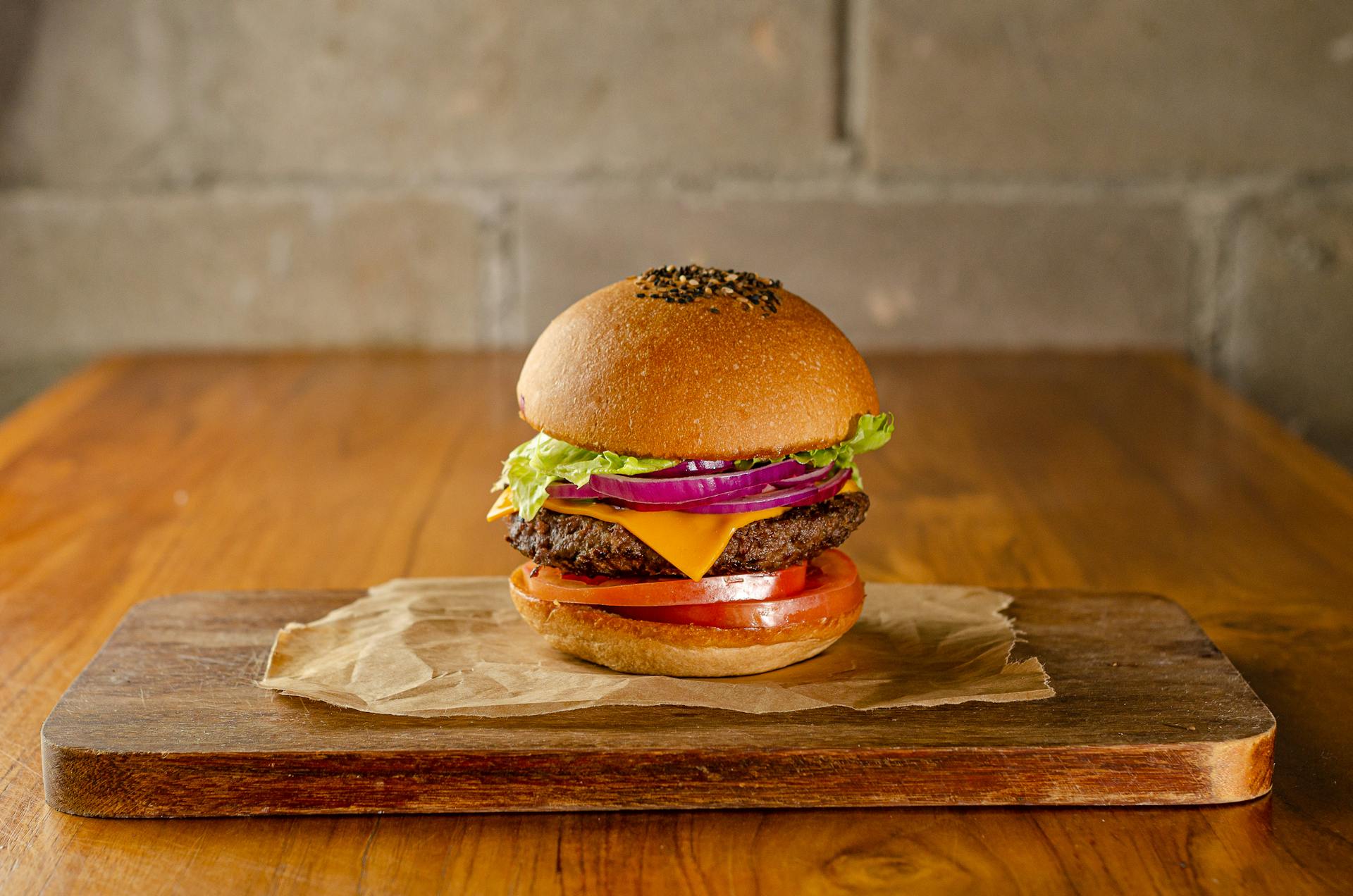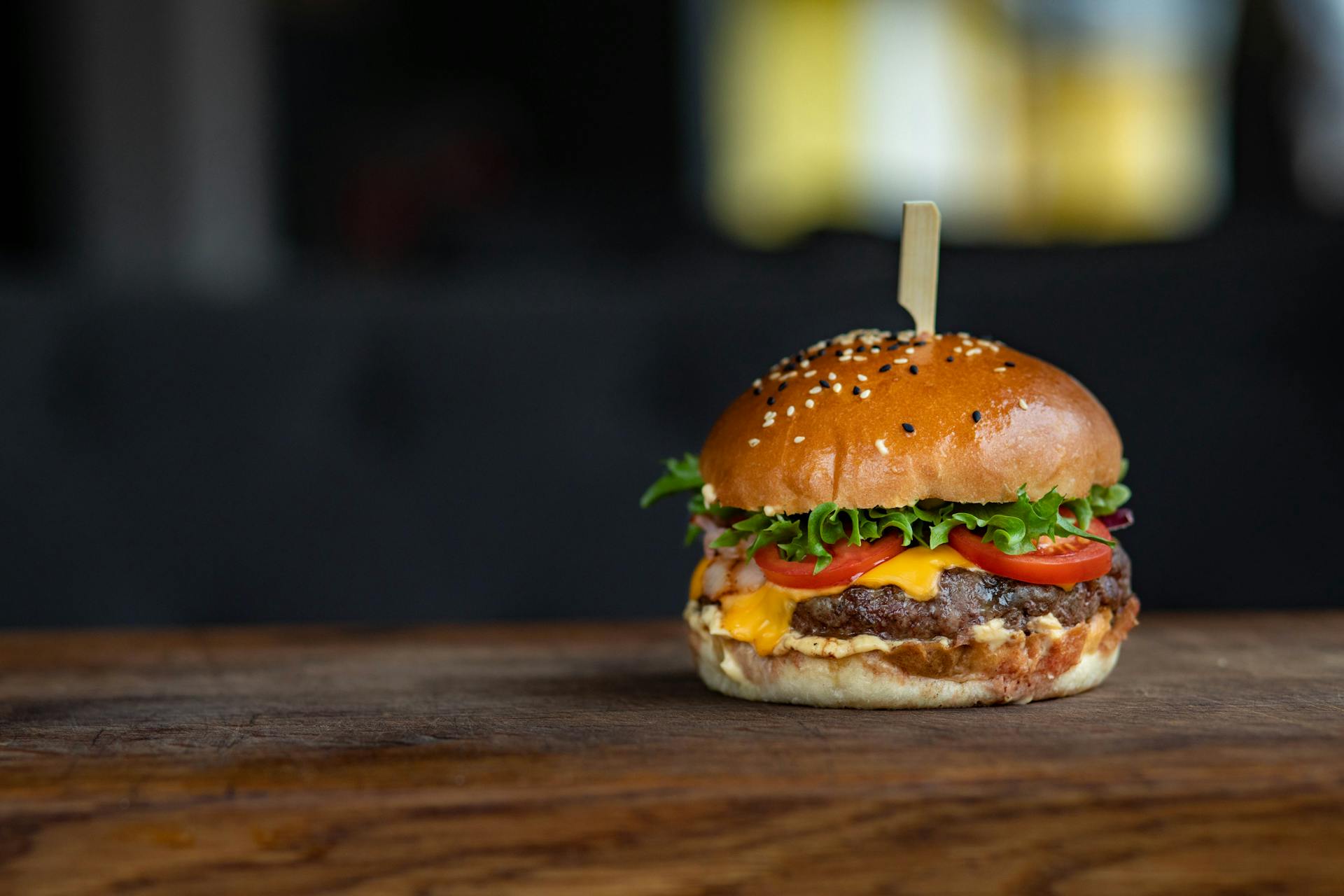American cheese pairs wonderfully with a juicy cheeseburger — which is why it’s often a go-to whether you’re ordering a cheeseburger at burger joints or making a burger on the grill at home. Yet despite its name, many people are shocked to learn that American cheese is not truly a cheese by definition. So what exactly is American cheese and is it healthy to consume? We’ll break down the details of this popular burger topping to help you prepare for a killer grilling season.
What is American cheese?

Although most of us call American cheese “cheese”, it’s a pasteurized processed cheese product. This definition, which is regulated by the Food and Drug Administration (FDA) requires that a food product must be made of more than half cheese (pressed curds of milk). To make American cheese, companies have to process the cheese with other blends of cheese and sodium citrate. Typically, you’ll find this type of American cheese in pre-packaged slices such as in Kraft singles.
The reason many people love American cheese on a cheeseburger is due to its melty texture. When melted, the emulsifiers added to American cheese keeps the cheese ultra creamy as it melts. Although delicious, this type of cheese is considered a processed food and isn’t necessarily best for health. Some American cheese products also contain artificial colors, whey, modified food starch, seed oils, or other inflammatory ingredients.
Healthier alternatives for your burgers
As delicious as American cheese is on a burger, there are dozens of healthier and equally delicious cheese options to melt on your burger. Give one of these a whirl this grilling season for a new flavor profile.
Cheddar cheese
Yellow cheddar is a great option for burgers that creates the same “classic yellow” look as American cheese. Cheddar that is too mature (aged over one year) tends to have a texture that is too crumbly to melt on a burger. Instead, look for real cheddar slices that contain a higher moisture content. This will make it easy to melt and taste delicious!
Swiss cheese
Swiss cheese is delicious and melty atop a burger, offering a nutty and slightly buttery taste. For example, Kerry Gold’s grass-fed Swiss cheese uses rich, creamy grass-fed milk which results in a super smooth texture. You can also top your burger with mushrooms to create a classic pairing — a mushroom and swiss cheeseburger.
Pepper jack cheese
If you like a bit of a kick, pepper jack is another semi-soft cheese that melts wonderfully on a burger. This cheese melts similarly to softer cheddar but packs in a lot of flavors from jalapeno peppers.
Grilling healthier burgers

While you don’t have to ditch American cheese in its entirety, you may just find you fall in love with the fresh taste of a cheeseburger made with 100% cheese. Opting for real cheeses and avoiding cheeses with additives can help you elevate the taste of your burgers this summer while also feeling great about making healthier food choices.




